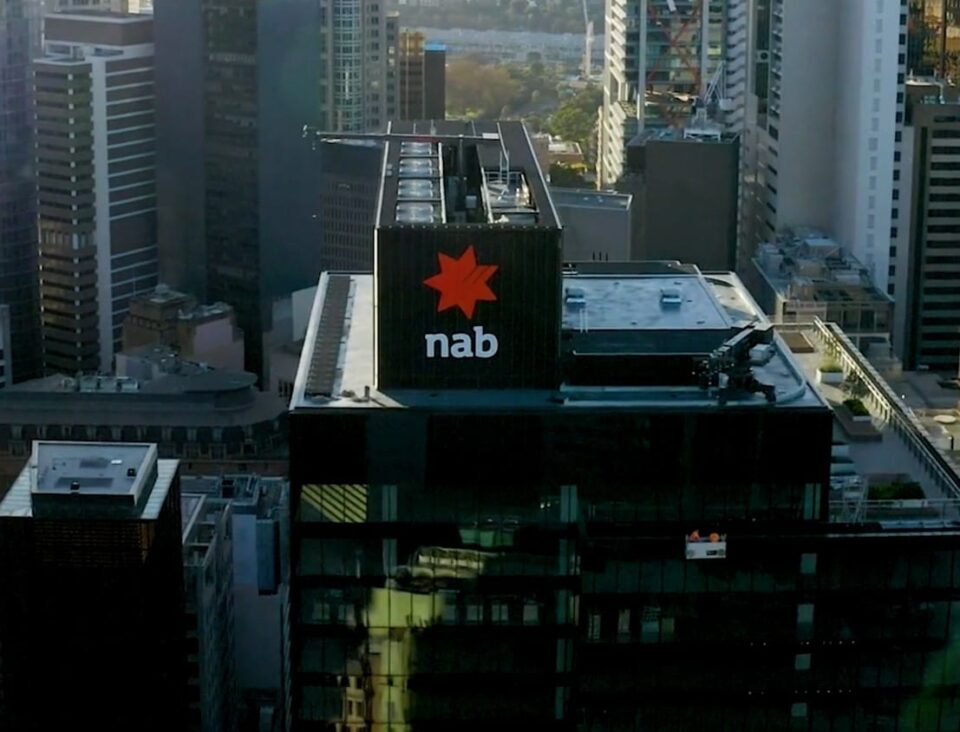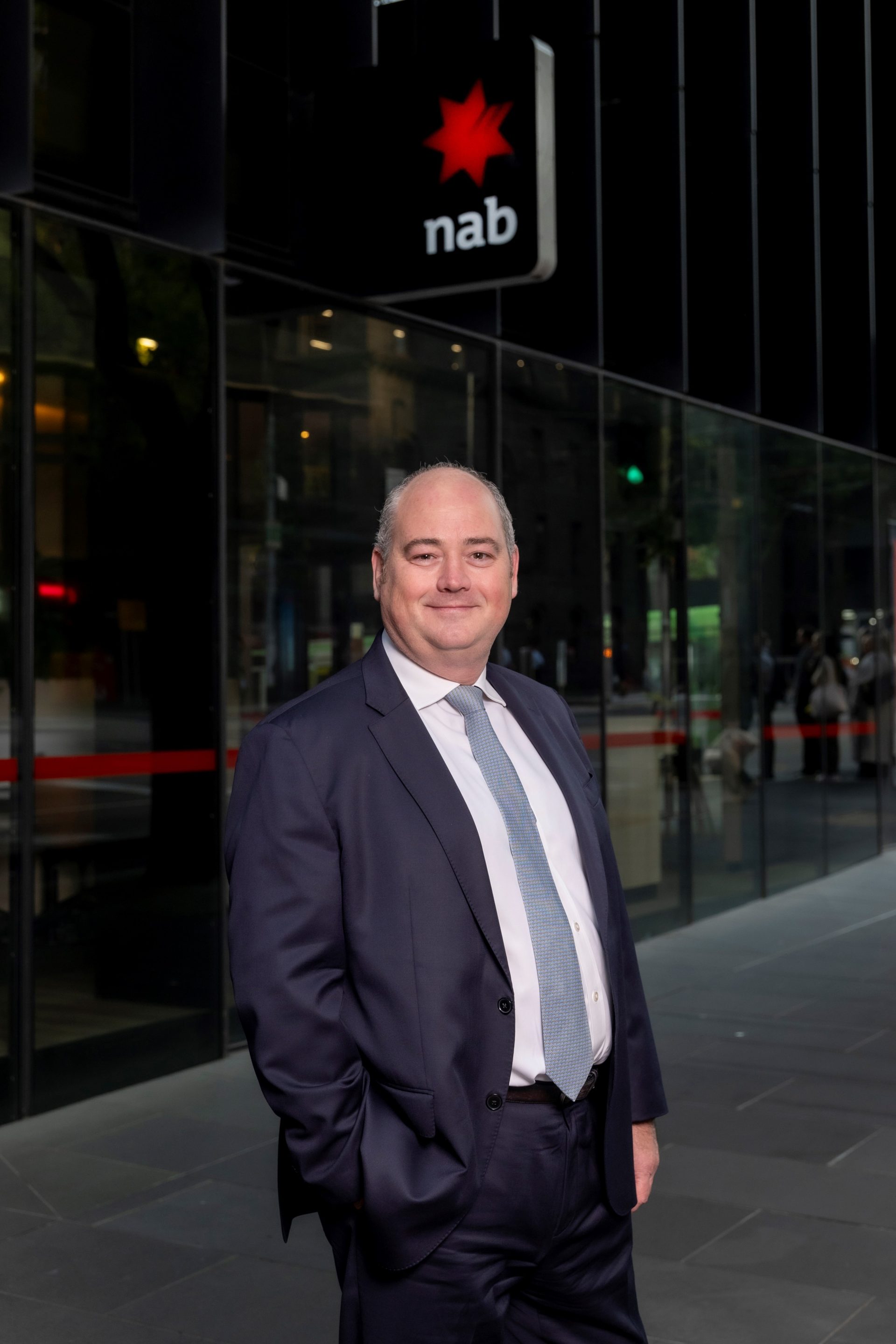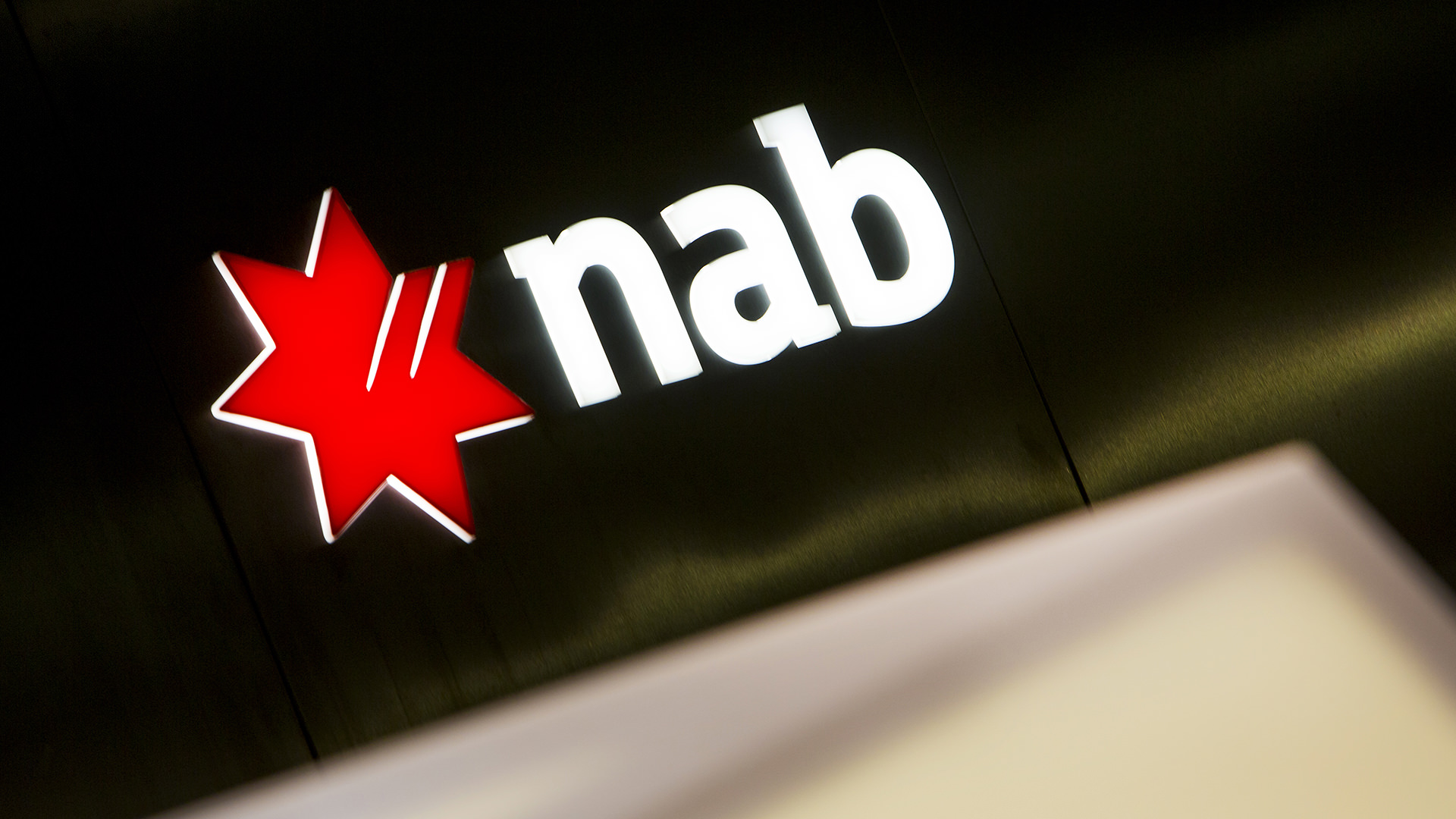ANDREW THORBURN: This result is pleasing, it caps off I think three years of very consistent and good quality execution of the strategy we outlined. The numbers for the year are good – our profit, full year profit is $6.6 billion, up 2.5 per cent; we’re paying $5.3 billion of that profit out to shareholders. And in the half, we’ve had a good half; our margin is up, costs have been well managed. We’ve invested as well, our asset quality is excellent. Our capital level at 10.1 per cent is within striking distance of the APRA 10.5 per cent level. We’ve announced a dividend of 99 cents in the second half and we have a DRP with a 1.5 per cent discount on the way to help us do a capital build.
So I think it’s a good result, but what we’ve been doing and saying for some time is that we need to think longer term. We do see challenges in the environment, but we also see opportunities. I think if there’s any company that should be taking a longer term view, say three to five years, it’s a bank and that’s what we’re doing today. We’ve taken the time to think about what that plan looks like and we’re announcing it today. It’s going to drive productivity and growth. We think both are important and we are investing another $1.5 billion over the next three years on top of the $3 billion we would also invest – so $4.5 billion to really transform the bank.
And we’ve put some new opportunities and new goals out there and I’m looking forward to not just talking about them today but executing them over the next few years. So, with that introduction I’ll go to your questions.
JOURNALIST: Andrew, 6000 job losses that’s a significant number; how is that going to roll out and why are you doing it?
THORBURN: Well when I think about a longer term plan, and the challenges in the environment, I think all big businesses – particularly incumbent businesses – the reshaping of the workforce is going to be significant. And I think it’s important we face into that and we have a clear plan and we talk with our people about it. We’re investing here to grow and drive productivity. So it’s a very good investment story, it’s a long term story. But there’s no doubt that our industry is going to have to significantly reshape our workforce and that’s what we’re facing into.
So what we’re doing is we’re simplifying the bank. And as we simplify, we automate processes and things move to digital channels, we will need less people and as that happens we estimate that there will be 6000 less people needed in three years’ time.
Having said that, we’re hiring 2000 people with different capabilities: data scientists, AI, robotics, automation, technology people, digital people, so the net will be 4000 and that’s just a reshaping that’s going to happen.
As we go through that for people that will be leaving our company over the next few years, we do want to do that well and we’re establishing a vehicle called The Bridge. The Bridge will actually help people out of our company across a bridge into new employment. We’re going to do a number of very significant things to help them, to give them the confidence and the skills to start that new role outside the company.
JOURNALIST: Andrew, what sort of staff will you be losing? Will it be traditional banking staff, frontline staff who will make way for a new-age digital online staff?
THORBURN: We’re very happy to do retraining for people who have got the aptitude and commitment to do some retraining, but there will be some where they’re coming out of more traditional areas, but what we’re not doing is saying now that the 6000 will come from here or here or here. It’s over three years, remembering that we have 3000 voluntary attritions every single year so managing that well will be very helpful. And as we simplify the bank, as transactions move more and more – which customers are driving – to digital channels, we will progressively need less people in certain areas. But as that happens that’s when we’ll make those changes. So it’s going to be over time and as we simplify the company.
JOURNALIST: And does this make any change to your commitment to bricks and mortar branches?
THORBURN: We think our branches and business centres are very important in the future. I think we’ll have a very significant investment in them, because our people want and need in certain parts of financial services, face-to-face communication. I think that’s crucial.
So we’ll have a very significant investment. But I think it’s going to change. The branches where they are will have to move to different places because the whole economy and our population movement is quite significant. And one of the things we’ve said is we’re going to be investing in the fast-growth urban corridors in western Sydney and Melbourne. And I think, we said we’re going to be opening 10 new branches in those areas, so that’s an example of investing in new growth as customers use different channels around the country.
JOURNALIST: In terms of the reshaping of the business and the focus on the business bank that you outline in this. Can you talk a little bit about how that will work in practice. Should we see your revenue shift towards more business revenue? And is that a reflection of a tougher operating environment; decision to focus on your core strengths? What’s behind that?
THORBURN: We have said that if – as part of our four pillars, our four strategies – the best business bank is the first one we call out. This has long been NAB’s heartland. We’re the largest. We’ve got positive NPS. We’ve got profits and revenue up in this last half. And I think it’s really been a good story. So now it’s about playing to our strengths.
We think the environment where housing credit is slowing; business credit starts to pick up. Business formation, private businesses, generate 75 per cent of jobs in Australia, so that’s the future. And small business, we’re doing a lot of work at that small business end for growth businesses and entrepreneurs with things like QuickBiz.
So we see this as a really important part of Australia’s future and our future, so we’re investing heavily in that. And we talk about relationship bankers, we talk about empowering those relationship bankers, we talk about more specialists. We know that industry specialisation is important and we’ll be investing in that as well.
JOURNALIST: So just to clarify, this $1.5 billion investment you’re talking about – is that mainly directed towards the business banking part?
THORBURN: It’s directed towards the whole bank but because a lot of it’s going in to areas like technology and product, obviously the business bank will be a big beneficiary of that. But it’s across the board that we’re doing it. But the business bank over time will be a very significant focus for us.
JOURNALIST: [inaudible] what you’re saying in business banking, I saw your margins as pretty kind of stable. But I also see competition in that area. Everyone is going for those big clients like Origin and those headlines there, so can you talk about how is it that you are choosing that and where you’ll continue to in the next two quarters?
THORBURN: So Paulina I would just clarify by saying when we talk about the best business bank we’re talking about businesses with, say, turnover of up to $50 or $75 million. We aren’t talking about corporate or institutional companies. We have a separate business that’s actually doing really well; I think they’re doing a great job at that end of optimising capital. It’s under a lot more competitive pressure with margins because of foreign banks and a lot of those companies are listed and they can go to the debt capital markets themselves. So our real sweet spot and our NAB heartland is being the business bank of small business, medium sized businesses, of customers of say $50 million $75 million turnover. That’s really where we’re going to be focusing.
JOURNALIST: Just a few quick ones, what is the market share in business at the moment and what are you aiming for?
THORBURN: So, business lending we’re at about 21.5 per cent, although that’s the total market. If you look at the small/medium size it’s more like 28 to 32 per cent. Agri is at 32 per cent, so it’s a very significant number for us. Now we have said as part of this long-term plan of investment, we have really called out cost save in three years’ time of a $1 billion as we simplify the bank. We haven’t named revenue numbers; obviously they’re a bit harder to separate from the core business. We are very confident that there will be more revenue growth and more market share gains and better retention as part of our longer term plan.
JOURNALIST: But no specific target, or anything like that? With the interest-only lending, I saw it went down to 25 per cent, the flow. Are you looking to keep it well below the cap? APRA told everyone to stick well below the 10 per cent investor cap. Is that the same for interest-only?
THORBURN: I think as a general principle we always have a buffer for a regulatory number, so this one will be no exception. I think we’ve worked very hard and fast to get under that cap, so now it’s there or thereabouts. I think we’ll just keep monitoring it, keep it under review. It may have a little, or some opportunity, to go back up, but that’s not part of our strategy at the moment. Now we are actually keen to encourage people to go into principal and interest and we’ve seen a lot of switching from interest-only. Principal and interest rates are significantly lower than interest-only, so there’s a real incentive for people to move into those.
JOURNALIST: Hi Andrew. I just wanted to clarify on the 6,000 jobs – is that a net figure? How does it interact with the 2,000 that are going to be created?
THORBURN: The net is 4000 Clancy; six minus the two.
JOURNALIST: And you’re assuming that people in the 6000 aren’t going to be getting jobs in the 2000? There won’t be redeployment?
THORBURN: No, no, we haven’t said that. We’ve just said that the 2000 are different sorts of capabilities and skills. Earlier I said that we are open to people retraining if they’ve got that aptitude and want to make that commitment to do it, so we’re very open to that.
I want to stress that the 6000 comes over three years, and as we invest these sums of money to simplify the bank. What we’re going to do is, for example: 15 to 20 per cent of IT applications are going to be retired; 50 per cent less products on sale. It’s going to simplify the bank dramatically. And as we do that we’re going to need less people to do the business the bank does. That’s the outcome of that process. That’s where the 6000 comes from; the 2000 we are re-hiring back in for a net of 4000.
JOURNALIST: Could I just clarify that the main purpose of the restructuring around employees. Is that really about adjusting to digital changes that are affecting the bank and extracting more productivity?
THORBURN: I think where I start with this Clancy is that we need a long-term plan, a three to five year plan. And when we face into that environment we see the impact of digitisation, fintech players, new global banking players coming into our market. An economy that I think has got a lot of potential but still uncertain, particularly given the global situation. So I’d rather face into this environment from a position of strength – and we’re in that position today – rather than drift into it or someone else forces us to do it. I want to put out this plan, I think it’s a good plan but I want to be open with our people too. We’re in a very dynamic industry, the workforce is changing and we’re being honest about that and I think we’re also helping our people through that through the likes of The Bridge.
JOURNALIST: Which of these four divisions is in the most dire need of simplification – of needing that technology?
THORBURN: I think a lot of our technology and products go across all four. Maybe with the exception of New Zealand, which has its own systems. So the three customer businesses often share the same technology and product capability, but where we will be aiming, really, is the business bank – Business & Private Banking, because that is, that’s our spearhead.
JOURNALIST: Does that have the most people as well? How many people do you have in that area?
THORBURN: Well we’ve got 4000 to 5000 there, but we’ve got more in the consumer bank. But I go back to, as we do the simplification, then we will understand where we need less people and then we’ll act on that. We don’t have a particular target that ‘X’ will come from here, or ‘Y’ from these areas at this point.
JOURNALIST: So just those two: Consumer Banking & Wealth and Business & Private Banking – is that where you feel the most need is for technology?
THORBURN: Our focus is on improving technology and product simplification for clients. That’s what is driving our company. Those two businesses are the customer facing businesses.
JOURNALIST: Andrew, if I can just get a question in – do you have a bit of budget in for redundancies and what this might cost over that period for those people to move on
THORBURN: Yes, we have said Peter, that at the first half of 2018, our next half, we have a figure of $500 to $800 million of a restructuring charge that we will confirm at that point. But we obviously need to get the plan out there, we need to be talking about it, we need to do some final pieces of work and then we will be able to clarify a type of range or the specific figure. Thank you for your questions.
ENDS
Find out about how NAB is backing communities.





